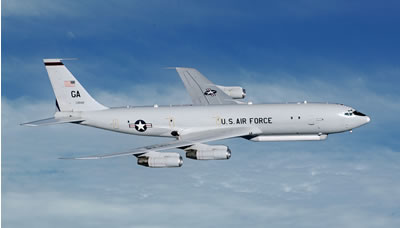Northrop Grumman will enhance the capabilities of its Joint Surveillance Target Attack Radar System (Joint STARS), installed on the fleet of E-8C Joint STARS aircraft. The enhancements will introduce improved mobile target precision tracking and engagement capability with the radar’s Land/Maritime Mode (ELMM). The technology to be used for the upgrade is an outgrowth of the successful DARPA Affordable Moving Surface Target Engagement (AMSTE) program, demonstrated in recent exercises and includes an Advanced Radar Mode (ARM) upgrade to the Joint STARS sensor. During these demonstrations, target coordinates were exported from Joint STARS radars directly to GPS guided JDAM munitions.
The E-8C Joint STARS is the world’s most advanced wide-area airborne ground-surveillance, targeting and battle-management system. It detects, locates, classifies, tracks and targets hostile ground movements, communicating real-time information through secure data links with joint and component command and control elements. The ARM upgrade will provide a Swath Synthetic Aperture Radar (Swath SAR) mode and provide an Enhanced SAR mode in a new processing architecture that provides additional growth for future enhancements. It also provides additional capability to disseminate high resolution imagery from the Joint STARS radar to ground commanders.
All Joint STARS aircraft are assigned to the Georgia Air National Guard’s 116th Air Control Wing, a “total-force blended wing,” based at Robins Air Force Base, Warner Robins, Ga. The wing comprises active-duty Air Force, Army and Air National Guard personnel.
Northrop Grumman is providing the wing with operations as part of multi-year Total System Support Responsibility (TSSR) sustainment and Joint STARS Extended Test Support (JETS) programs.

















